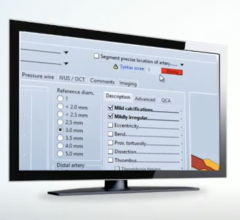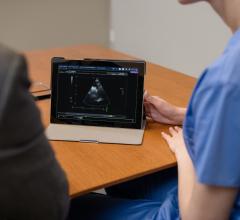For any cardiology department looking to upgrade or replace its cardiovascular picture archiving and communications system (cardiac PACS), or cardiovascular information system (CVIS), the main questions that should be asked are related to integration and interoperability. These are key to leveraging health IT investments to achieve improved efficiency, help cut costs and accommodate increased patient volume.
New technology investments should eliminate the need for separate workstations to access disparate silos of data, including cath reporting systems, various cardiac imaging PACS and reporting systems for different modalities. New CVIS should integrate the cardiology department’s entire workflow into a single system.
“U.S. hospitals have made progress in integrating cardiology images with non-image data over the past four years,” said Lorna Young, senior director of market research at market research firm IMV. The firm recently released a report on the state of the CVIS market. “Cardiologists need patient images to be integrated with related non-image patient information and structured reporting to improve diagnostic efficiency.”
IMV’s report shows U.S. hospitals are at various degrees of implementation along this path. More than three-quarters of the surveyed hospitals (77 percent) indicated they have both cardiac PACS and CVIS. An additional 17 percent have one system or the other, while only 6 percent of the hospitals have no formal implementation of either system. Of the sites that have both systems, nearly half indicated their cardiac PACS and CVIS are fully integrated, while the rest have not.
Ingredients for the Ideal CVIS
An ideal CVIS should be standards-based, vendor-neutral, use structured reporting (to enable comprehensive searches and data mining) and enable the following functionality using a single computer. A CVIS should serve as a comprehensive cardiology PACS to enable image review and sharing capabilities for all cardiovascular imaging modalities on a single workstation. It should have reporting capabilities for all sections of the cardiology department, so all patient data is accessible in one place. A CVIS should enable access to the ECG management system and possibly allow segments of waveforms to be incorporated into reports. For cath lab reporting, the system should be fully integrated with the hemodynamics system. The CVIS also should serve as the department’s image and report archive.
As society increasingly transitions to Web-based, mobile computing using tablets and smartphones, cardiology departments need to consider mobile device access to the CVIS. Physicians can leverage this mobile accessibility to become more efficient and improve care. This may include using a tablet to access reports, labs and imaging while on rounds, to enable better patient communication/engagement, to complete reports in-between procedures, or even making a determination from home if the cath lab should be activated at 3 a.m.
Ideally, the system also should meet meaningful use criteria for sharing data and images with the hospital’s EMR and referring physicians outside the cardiology department or the hospital. Future meaningful use requirements should be considered, including expanding two-way access to patient data and images to enable patient engagement. Future meaningful use needs also require integration of computerized physician order entry (CPOE) systems for prescriptions and orders that combine clinical decision support (CDS) software. CDS software will need to document that appropriate use criteria (AUC) has been met for specific tests, imaging exams and procedures. Another component to consider is the use of radiation monitoring software to record the approximate doses patients receive from cardiac CT and diagnostic and interventional angiography. Dose recording software is already required in two states. and it is expected others will follow.
However, to enable the types of integration outlined above, the key element is the system’s interoperability between disparate vendors’ equipment, devices and third-party software. Some vendors may integrate better than others, especially with the most recently introduced CVIS platforms. Most of the major CVIS have created more vendor-neutral software, allowing greater accessibility. Even large medical device vendors, which in the past each had their own proprietary CVIS software that did not interface easily with other vendors’ systems, have all recently launched Web-based CVIS that enable much better interoperability.
Despite this, it is always good to trust but verify all interoperability claims and make sure any vendor chosen is held accountable to the department’s specific needs in the final contract language. Outline exactly what your department needs in the request for proposal (RFP) so all integration issues can be discussed before a system is installed.
Interoperability Barriers Still Remain
Two recent reports remind us that healthcare interoperability is still a major concern, regardless of what vendors say. A survey of CVIS end users released in August by IMV shows that while the evolution of these systems has progressed, it is clear respondents do not feel their journey on the cardiology information continuum is complete. When asked where they felt their current implementation of cardiac PACS/CVIS is relative to their ideal, only 33 percent of the respondents reported they were more than three-quarters of the way to their ideal system. Continued investment in cardiovascular IT systems is proceeding, with two-thirds of the sites planning to upgrade or implement a new or replacement CVIS over the next three years.
Despite their acknowledgement that the ideal architecture includes integration with the EMR, survey respondents feel their EMR vendor should not necessarily integrate their ideal IT solution. They said EMR vendors’ priorities might not match cardiology’s priority of aligning its IT system with its workflow practices. In fact, a higher proportion of respondents said they are more likely to favor their current cardiac PACS or CVIS vendor, or even their radiology PACS vendor, to be the integrator for their ideal CVIS solution than an EMR vendor. Having an enterprise-wide archive solution that is developed for cardiology, radiology and other hospital departments also is part of the vision, IMV reported from the survey results.
The interoperability issue is not limited to cardiology systems. Another survey, released in September and conducted by Premier Inc. and the eHealth Initiative, found the failure of systems to integrate easily is causing major health IT issues for most accountable care organizations (ACOs). Although ACOs were created to improve clinical quality, poor interoperability across systems and providers remains a major barrier, according to the survey. Access to data from external organizations was challenging for 100 percent of respondents.
When announcing the survey results, Premier said compounding the challenge of accessing and sharing data is the fact that 88 percent of the ACOs face significant obstacles in integrating data from disparate sources, and 83 percent report challenges integrating technology analytics into workflow. Interoperability of disparate systems is a significant challenge for 95 percent of organizations and could be limiting the abilities of ACOs to exchange data.
Comparison Chart
This article served as an introduction to the 2014 cardiac PACS comparison chart. Listed below are the companies that participated in the chart. The chart can be accessed by clicking on the "comparison charts" tab at the top of the page.
Agfa HealthCare
www.agfahealthcare.com
Carestream Health
www.carestream.com
Cerner
www.cerner.com
Digisonics
www.digisonics.com
DR Systems
www.drsys.com
Fujifilm
www.cardiovascular.fujimed.com
GE Healthcare
www.gehealthcare.com
Infinitt
www.infinittna.com
Lumedx Corp.
www.lumedx.com
McKesson
www.mckesson.com/cardiology
Merge
www.merge.com
Novarad
www.novacardio.com
Philips
www.healthcare.philips.com
RADinfo Systems
www.radinfosystems.com
ScImage
www.scimage.com
Siemens Healthcare
www.usa.siemens.com/CVIS
References:
1. MV Report. “2014 Cardiology Information Continuum: Present Access
and Future Integration Strategies for Cardiovascular Information Technology.” www.imvinfo.com
2. Premier Inc. “Accountable care organizations struggling with HIT interoperability.” Survey of 62 ACOs, including members of Premier’s PACT Population Health Collaborative. Survey fielded in July-August 2014. Published online www.premierinc.com/aco-interoperability-survey-9-24-14. Accessed Oct. 4, 2014.



 June 27, 2022
June 27, 2022 








